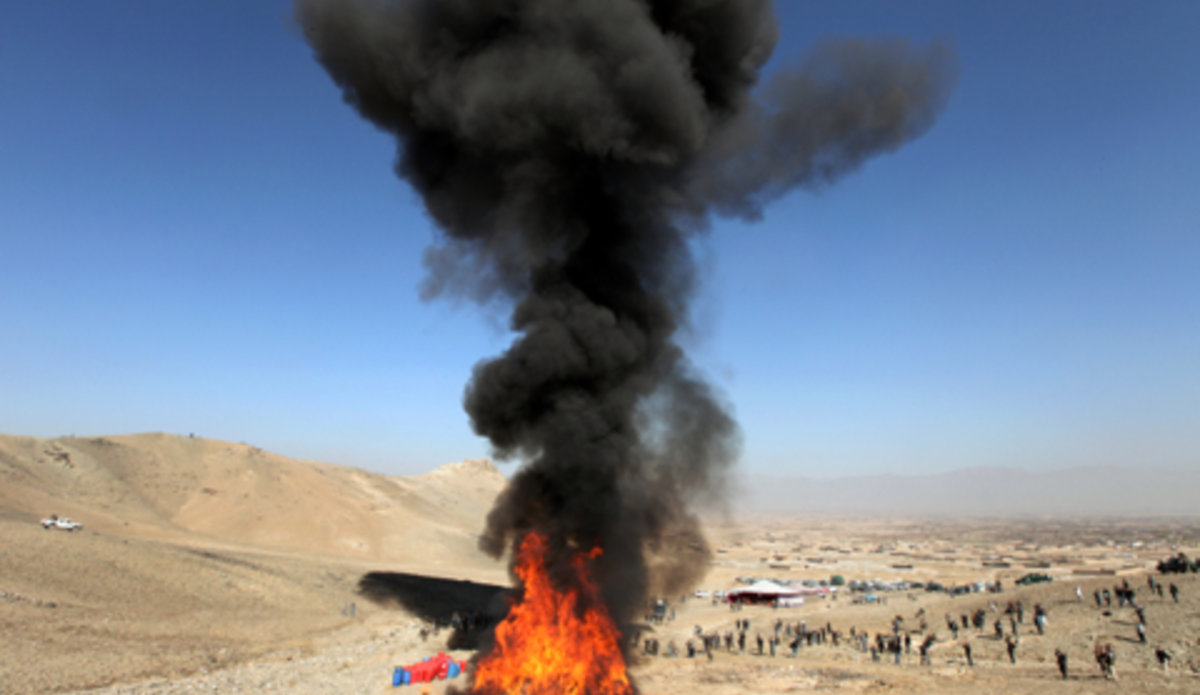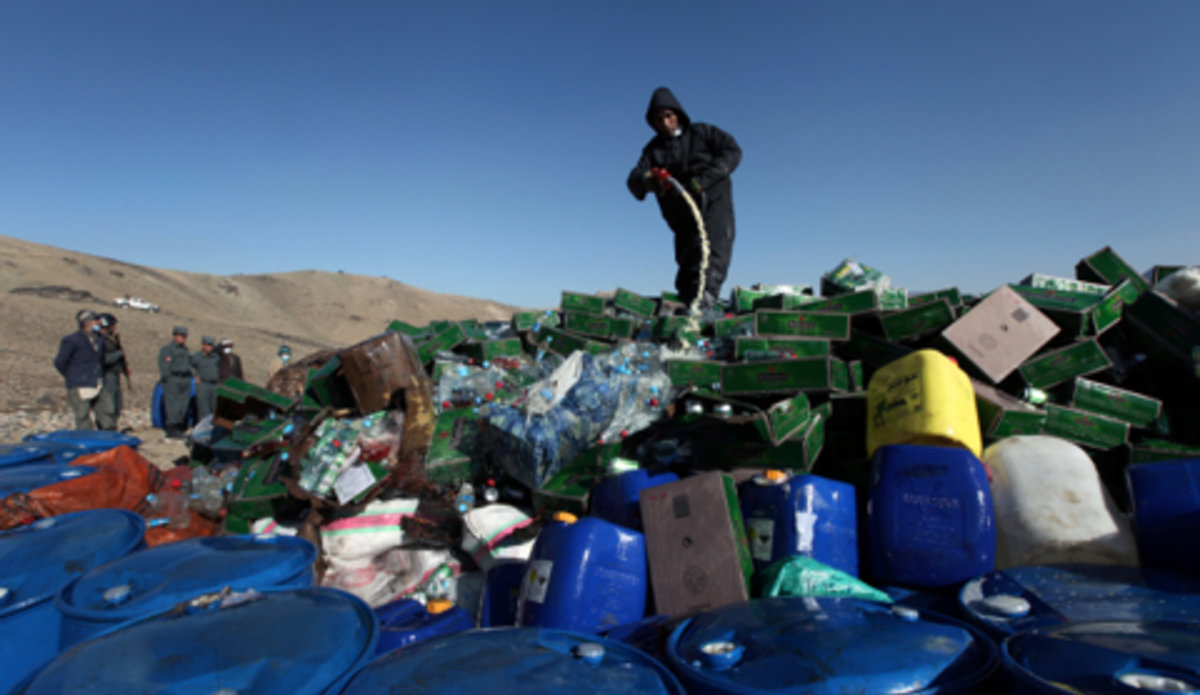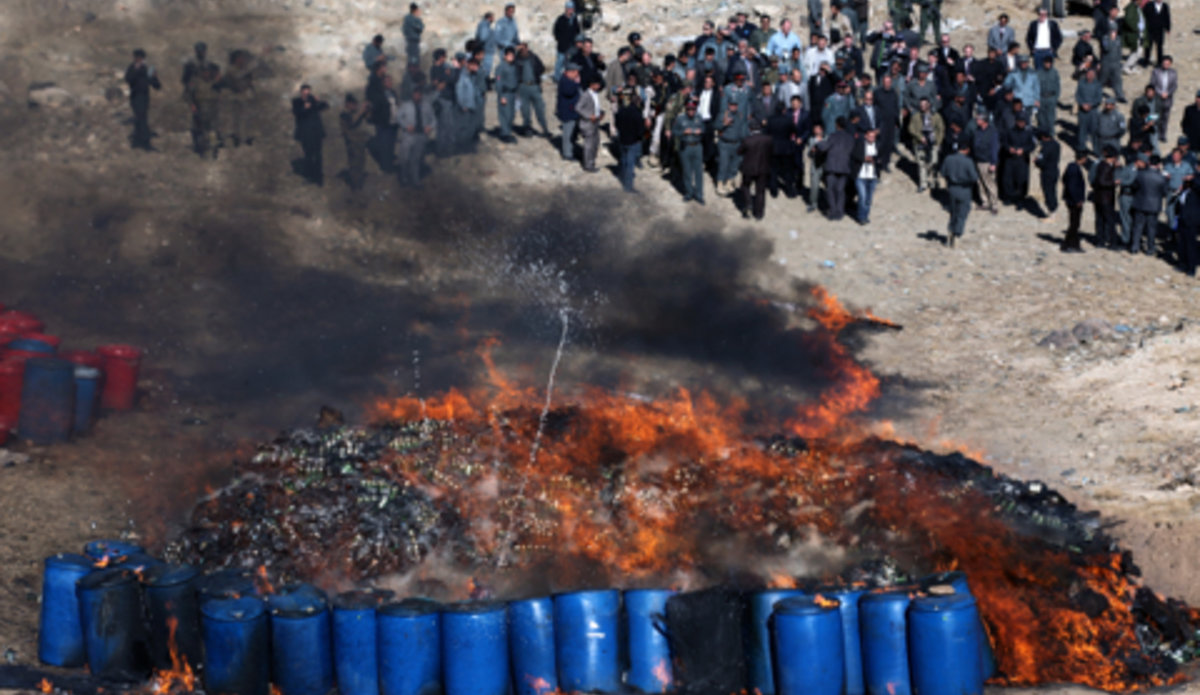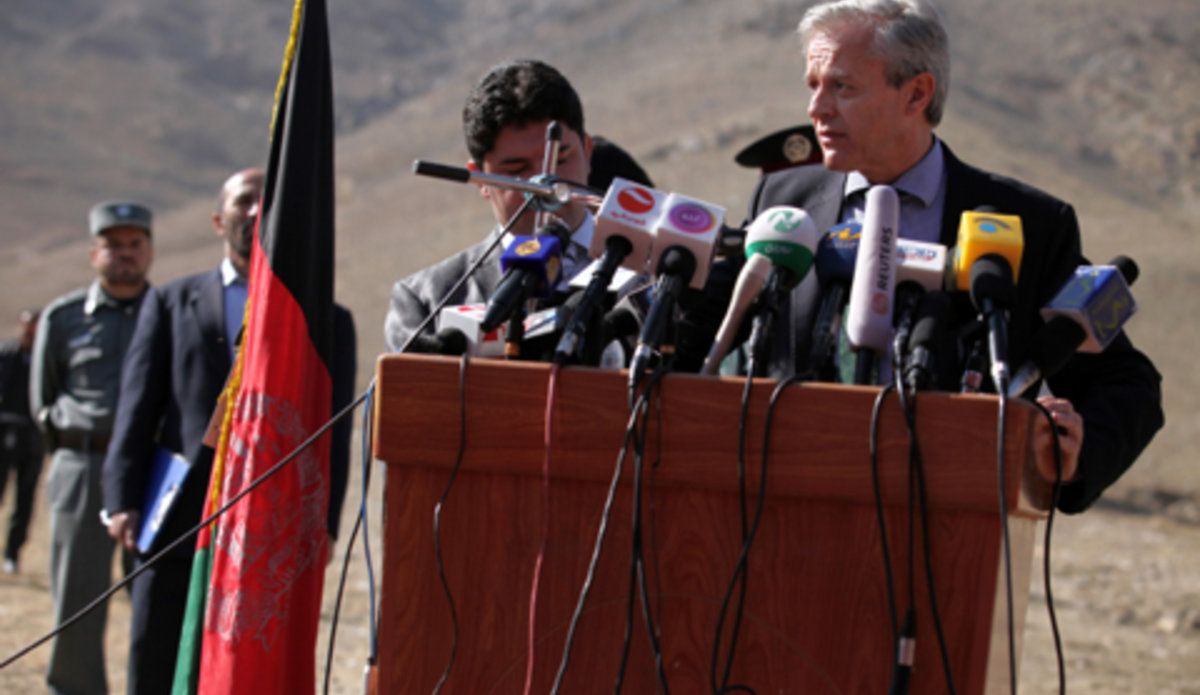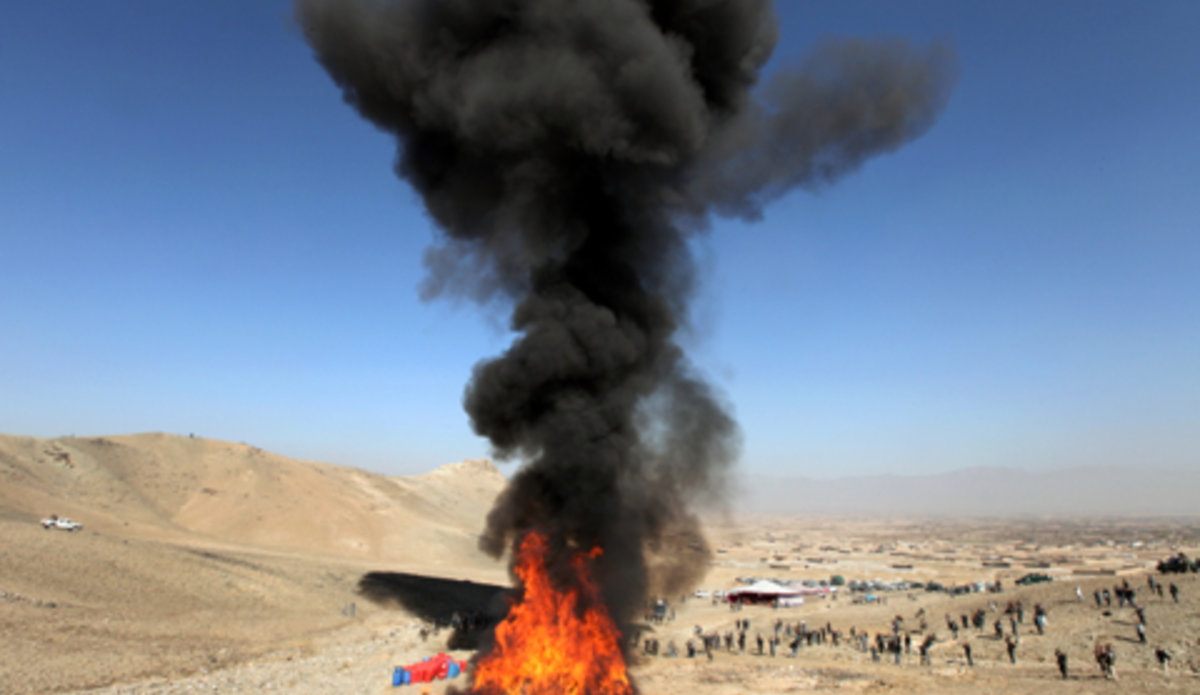Over 20 tons of illicit narcotics, precursor materials and alcohol burnt near Kabul
KABUL - Over 20 tons of illicit narcotics, precursor materials and alcohol – seized by Afghan authorities in raids in Kabul and its outskirts over the past ten months – were destroyed in a bonfire today, in the presence of senior government officials, representatives of the international community and the media.
“Narcotics have become a big challenge for Afghanistan, the region and the whole world… it has endangered the life of many Afghans, which is a top matter of concern,” the Deputy Minister of Counter Narcotics at Afghanistan’s Ministry of Interior, Baz Mohammad Ahmadi, said in his remarks to the event.
“The seized drugs are being burnt in accordance with the article 16 of the Afghan Counter-Narcotics law,” he added.
The items burned included more than 1,700 kilograms of opium, almost 460 kilograms of heroin, close to 1,180 kilograms of morphine, 3.4 kilograms of crystal meth, more than 1,085 kilograms of hashish, 50 kilograms of acid, almost 87 kilograms of precursor materials for the manufacture of synthetic drugs, and more than 10,700 litres of alcohol.
Mr. Ahmadi said that Kabul City had become a key route for drug trafficking during the current year, and this, in turn, had intensified the activities of the Counter Narcotics Police of Afghanistan (CNPA). In addition, given that the production and sale of illicit narcotics was the only systematic way of providing funding for terrorism and organized crime in Afghanistan, he continued, the Ministry of Interior had made it one of its top three priorities.
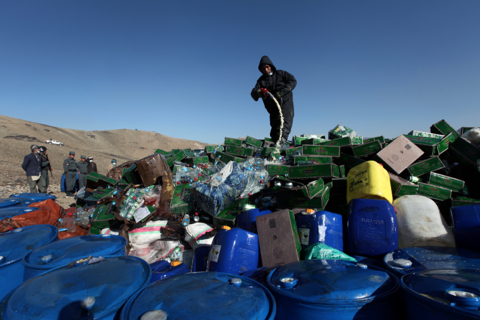
Today’s bonfire comes in the wake of the Afghanistan Drug Report 2012, produced by the Afghan Ministry of Counter Narcotics (MCN) with support from the UN Office on Drugs and Crime (UNODC). The report found that despite some progress in restraining cultivation, trafficking and the use of illicit drugs in Afghanistan, it still remains a “critical challenge” for the country, which is the largest producer and cultivator of opium in the world.
“The evidence shows that the cultivation, trafficking and use of illicit substances remains one of the most critical challenges facing Afghanistan resulting in significant negative social, economic, health and political impacts on the country,” the Afghanistan Drug Report 2012 stated.
“The need to strengthen and scale up counter narcotics policies and interventions is more pressing today than ever before especially in view of the political transition facing Afghanistan in the near future,” the report added.
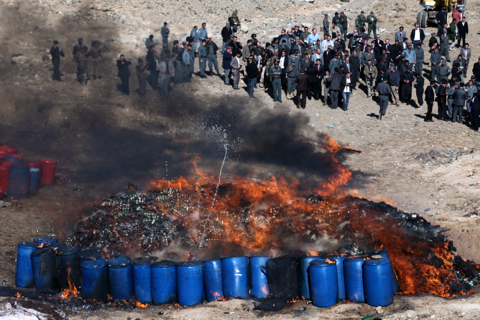
In his remarks at today’s bonfire, UNODC’s Regional Representative, Jean-Luc Lemahieu, highlighted the CNPA’s increase in its seizure rates over recent years as well as the success that the country’s Criminal Justice Task Force and the drug courts have had in arrests and prosecutions.
However, he noted that there was a “paradox” involving these successes and the cultivation of illicit drugs such as opium and the treatment of addiction – the number of drug addicts in Afghanistan has increased from one million to 1.6 million people over the last year, according to a UNODC survey.
“There is a paradox – despite this tangible progress within the world of counter narcotics, the addiction rate is still going up far beyond one million and for the third consecutive year in a row, we witness an increase in the opium cultivation,” he said. “Those elements are very worrying.”
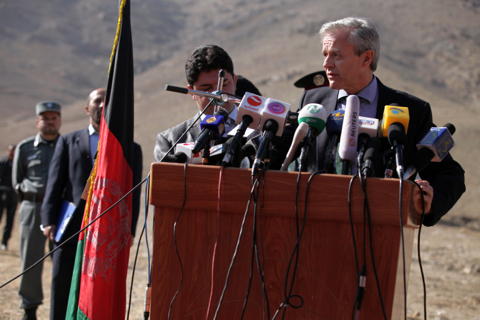
Mr. Lemahieu described Afghanistan’s illicit drugs problems as “a virus, which is festering on a body showing very low immunity resistance, thereby further declining the governance systems within this country.”
Efforts to deal with the virus were necessary, he added, “but to be successful, we need to deal with the entire package of the low immunity resistance – think corruption, think Kabul Bank crisis, think the lack of transparency and accountability in many of the issues we are undertaking today.”
In his comments to the event, the Deputy Minister of Counter Narcotics, Mohammad Ibrahim Azhar, said that the Afghan Government did not have any achievements to speak on in terms of reducing national opium production during 2013.
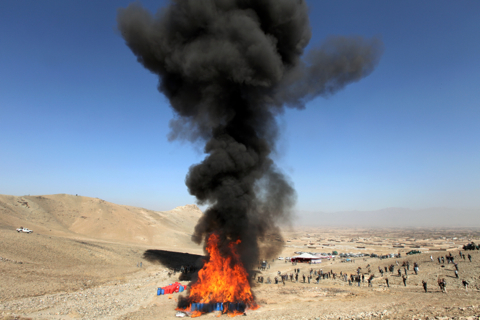
He said the factors behind the increase in the cultivation of opium poppies this year were high market prices for opium, insufficient public awareness campaigns and the emptying of warehouses where narcotics were being stored. UNODC has stated that there were some 12,000 metric tons of opium stockpiled in 2009.
“This is not only our responsibility,” said Mr. Azhar. “It is a national and international responsibility, and we want the international community to continue its support to the Government of Afghanistan beyond 2014 to control opium production in the country.”
(Photos by Eric Kanalstein / UNAMA)
Related article:
- Illicit drugs pose ‘critical challenge’ for Afghanistan, says UN-backed report
 UN
UN
